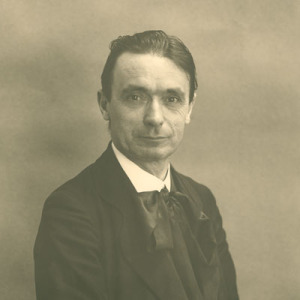Synopsis
 Filmed during 2011 – the 150th anniversary year of Rudolf Steiner’s birth – this two-part documentary by veteran film-maker Jonathan Stedall tells the story of Steiner’s remarkable life (1861-1925), as well as exploring the influence of his ideas and insights on a whole range of contemporary activities – education, agriculture, medicine, social and financial issues, and the arts.
Filmed during 2011 – the 150th anniversary year of Rudolf Steiner’s birth – this two-part documentary by veteran film-maker Jonathan Stedall tells the story of Steiner’s remarkable life (1861-1925), as well as exploring the influence of his ideas and insights on a whole range of contemporary activities – education, agriculture, medicine, social and financial issues, and the arts.
PART ONE (1 hour 30 minutes) describes Steiner’s childhood as the son of a humble railway official, growing up in the Austrian countryside, and his student years in Vienna  towards the end of the 19th century. Hugely influenced by Goethe’s scientific writings, he was gradually able to reconcile the powerful spiritual experiences he had had since childhood with his interest in science and philosophy. Nevertheless it was not until he was nearly forty that he found an audience interested and open to what he came to call his spiritual science.
towards the end of the 19th century. Hugely influenced by Goethe’s scientific writings, he was gradually able to reconcile the powerful spiritual experiences he had had since childhood with his interest in science and philosophy. Nevertheless it was not until he was nearly forty that he found an audience interested and open to what he came to call his spiritual science.
During the last twenty-five years of his life he lectured extensively all over Europe to educators, farmers, doctors, artists – and above all to people searching for a way that no longer separated science from religion, faith from reason, spirit from matter.
The film looks at examples of his legacy in the UK, India and the USA – Waldorf education, Biodynamic agriculture, Camphill’s work for those with special needs, and at Eurythmy, both as a therapy and as an art.



PART TWO (1 hour 45 minutes) looks initially at the subject of reincarnation and karma, with film at a prison in South Wales, at Ruskin Mill in Gloucestershire – a college for disadvantaged youngsters – and at a course for Biographical Counsellors at Emerson College in Sussex. 
 In the USA there are scenes at Waldorf Schools in Hawthorn Valley and Washington DC, at a biodynamic winery in California, and at the Copake Camphill community. Also featured are examples of Waldorf educational ideas being introduced into mainstream schooling at a Charter School in California and at the Steiner Academy Hereford.
In the USA there are scenes at Waldorf Schools in Hawthorn Valley and Washington DC, at a biodynamic winery in California, and at the Copake Camphill community. Also featured are examples of Waldorf educational ideas being introduced into mainstream schooling at a Charter School in California and at the Steiner Academy Hereford.
The film concludes with examples of Steiner’s influence on medicine – in Switzerland at the Hiscia Institute, and in England at Weleda in Derbyshire and at the Blackthorn Medical Centre in Kent – and culminates with a sequence at an international medical conference at the Goethenum in Dornach.


